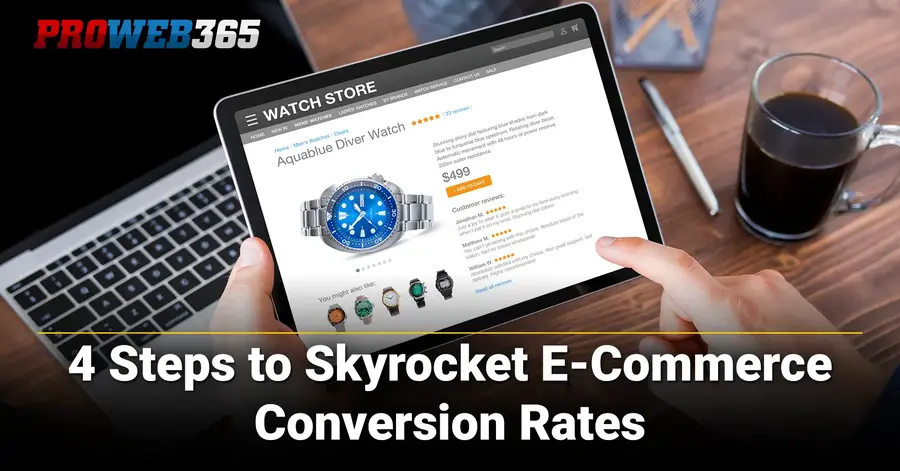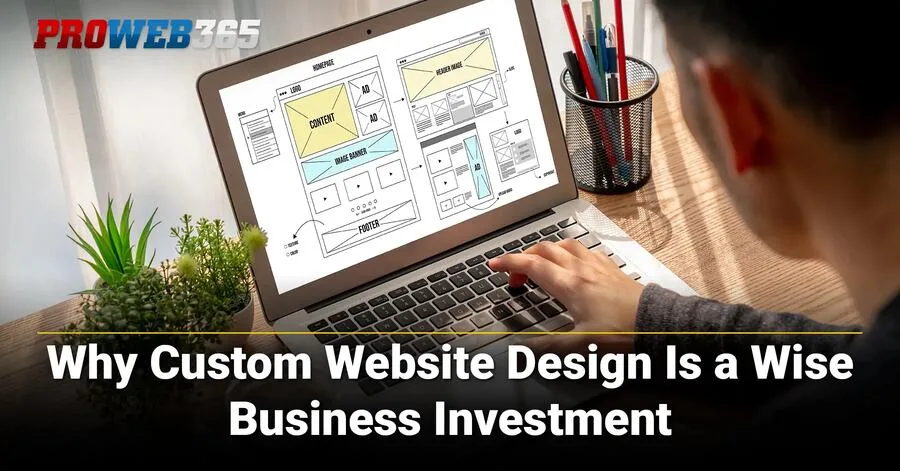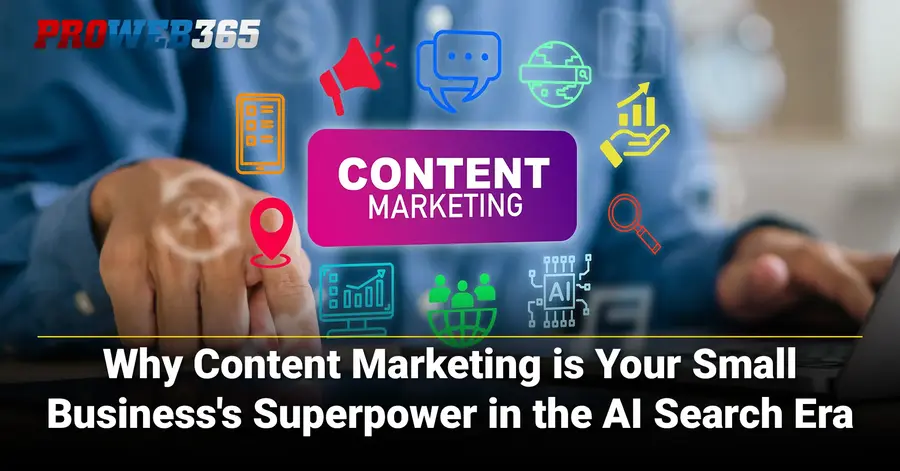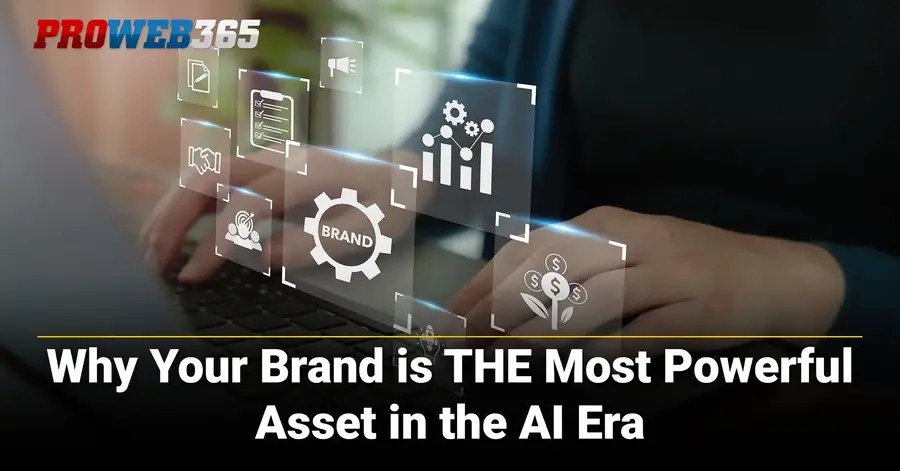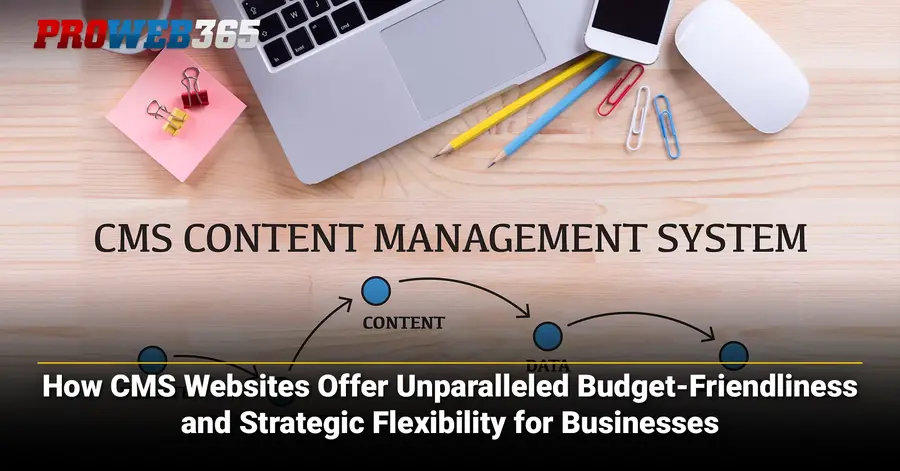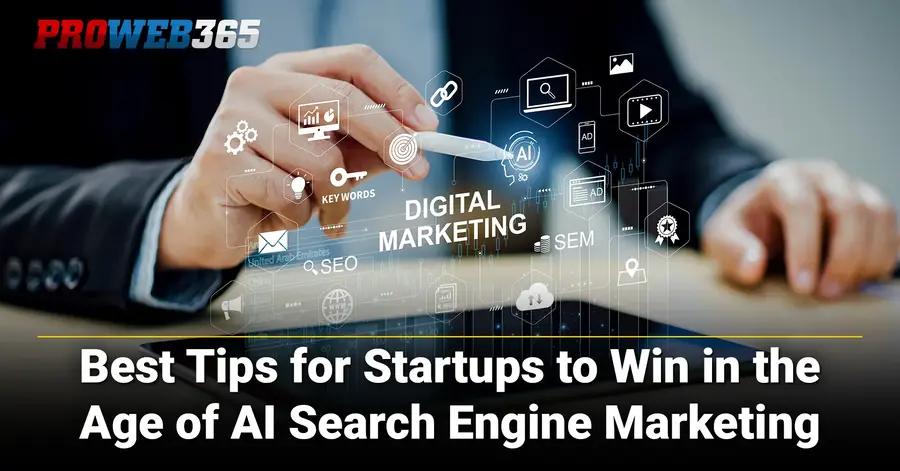Why the Majority of Small Businesses Need an E-Commerce Website

With global e-commerce sales reaching $6.86 trillion in 2025, an 8.37% increase from 2024, and mobile commerce accounting for 59% of total retail sales at $4.01 trillion, small businesses can no longer afford to ignore digital transformation. This comprehensive guide reveals how emerging technologies like AI-powered personalization, social commerce integration, and mobile-first design give small businesses unprecedented advantages over traditional retail, enabling global reach without massive overhead costs.
Key Takeaways
- The e-commerce landscape is changing, and small businesses must adapt to stay competitive.
- By embracing AI-powered e-commerce, you can use enterprise-level tools to offer personalized customer experiences and increase conversion rates.
- Social commerce is essential, as platforms like Instagram and TikTok are becoming major revenue drivers, especially with Gen Z.
- Optimizing for mobile-first design is non-negotiable, given that mobile devices account for 73% of all e-commerce sales.
- An e-commerce business offers the "unfair advantages" of lower startup costs and a global reach.
- Choosing the right platform and implementing strong security measures are foundational to building trust and ensuring long-term success.
4 Steps to Increase E-Commerce Conversion Rates
Converting website visitors into paying customers remains the ultimate measure of e-commerce success. The average global e-commerce conversion rate in 2025 hovers in the 2%-4% range, making optimization crucial for sustainable growth in today's digital...1. The E-Commerce Revolution: Your Business Can't Afford to Miss This Opportunity
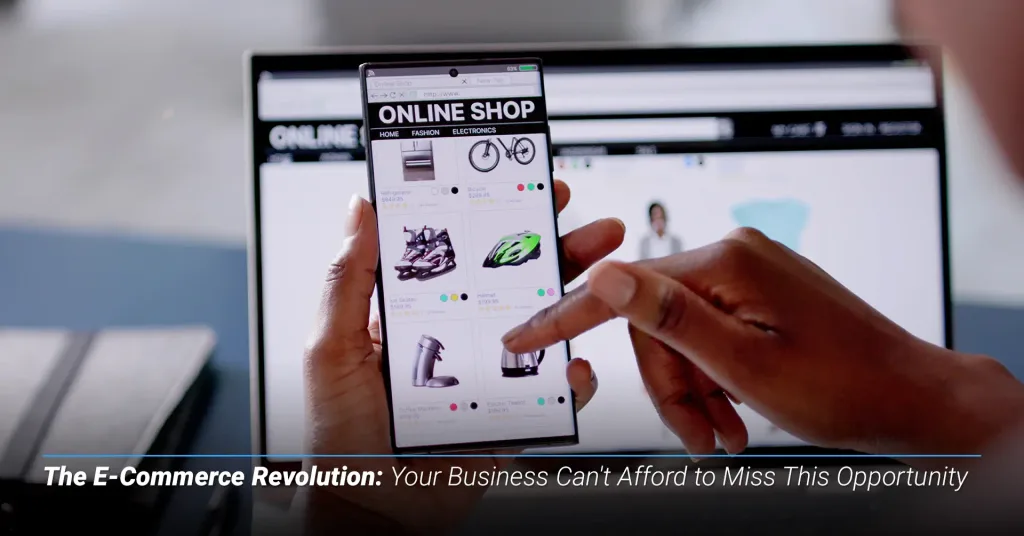
If having an e-commerce website for your small business is still an idea instead of a reality, then it’s time to reflect and rethink. Global e-commerce sales surpassed $4.1 trillion in 2024 and are projected to exceed $6.4 trillion by 2029, with mobile commerce accounting for 73% of all online sales. This isn't just a trend — it's the new standard of business.
As the minutes pass delaying launching your e-commerce website, competitors are capturing customers who could have been yours. Small businesses embracing current e-commerce trends are experiencing explosive growth, while those that resist are watching their market share disappear. E-commerce growth is rebounding to pandemic-era peaks, with online marketplaces growing from 40% to 67% of global sales since 2014.
The brutal truth: Consumers are already shopping online — the question is whether they're buying from you or your competition(s).
2. Game-Changing E-Commerce Trends That Will Make or Break Your Business
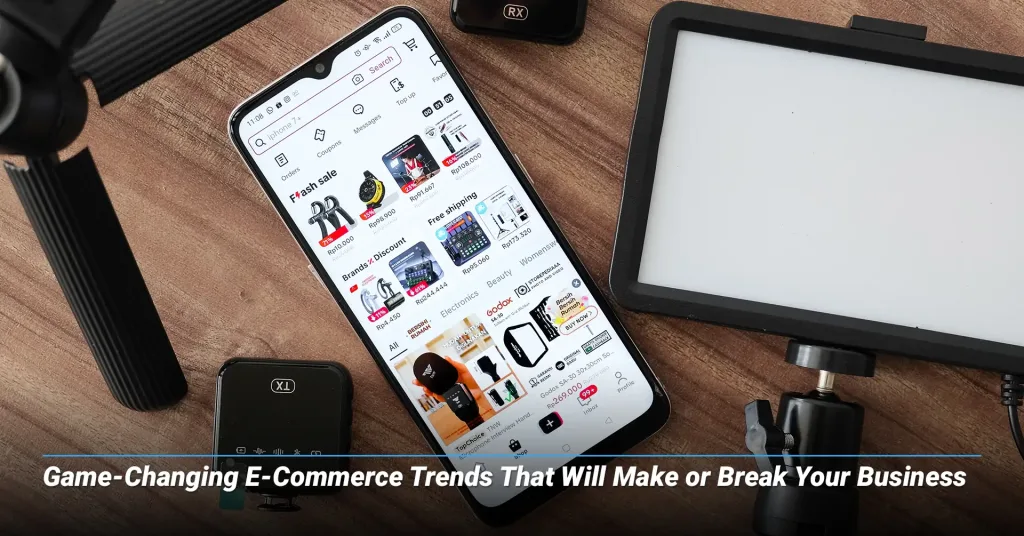
A. AI-Powered E-Commerce: Your Secret Weapon Against Larger Competitors
Currently, 92% of businesses use generative AI for enhanced customer experiences, with AI-driven personalization delivering conversion rate increases between 15-20%. Small businesses now access enterprise-level AI tools through affordable cloud solutions that were previously locked away only to corporations with massive budgets holding the keys.
AI chatbots provide 24/7 customer support, handling routine inquiries. This frees your staff to handle complex issues. Machine learning product recommendations increase average order values by showing relevant items customers are likely to purchase — turning single purchases into multiple sales automatically. AI email marketing automation maintains consistent customer communication without requiring dedicated copywriting staff.
Bottom line: Customers expect intelligent, personalized experiences. Without AI integration, your website will feel outdated compared to competitors who have embraced these tools.
B. Social Commerce: Turn Your Social Media into a Revenue Machine
Social commerce platforms generated $945.92 billion in 2023, with projections pushing that number all the way up to $13 trillion by 2033. Generation Z are leading the digital pack with 68% searching for products on social media and 22% completing direct purchases within platforms.
Notable success stories include Instagram Shopping for visual products, TikTok Commerce offering viral marketing potential that can scale businesses rapidly, and Facebook Shops enabling community-driven sales leveraging existing relationships. Additionally, Pinterest serves lifestyle and hobby products where users actively seek purchasing inspiration.
Reality check: Your social media followers are already shopping — they're just not shopping with you yet.
C. Mobile-First Design: Capture 73% of All E-Commerce Sales
Commerce optimization utilizing phones is non-negotiable. Mobile commerce accounts for $2.2 trillion in sales (60% of global e-commerce). Despite its conversion rate average hovering around 2.25% compared to its desktop counterpart at 4.81%, massive optimization of these opportunities must not be ignored.
Mobile app users convert 3x higher than mobile web users and view 4.2x more products per session. Having a page speed optimization of sub-3-second loading time is vital as 73% of users abandon slower sites — meaning slow websites are driving away almost three out of every four customers.
Wake-up call: If your website isn't optimized for mobile, you're losing 73% of potential sales before customers even see your products.
A Strategic Guide to Selecting a Great Website Designer
When you're a small to mid-size business owner or organizations, a website is more than just an online brochure; it's a foundational pillar for your identity, operations, and growth. In the AI era, a professional,...3. Why E-Commerce Gives Small Businesses Unfair Advantages Over Traditional Retail
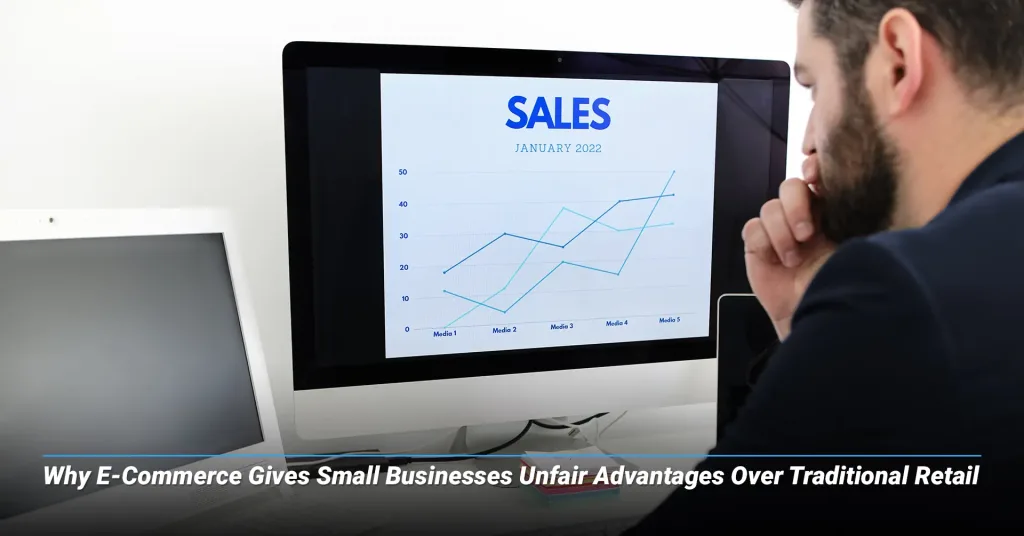
A. Slash Your Startup Costs While Maximizing Your Reach
E-commerce business models offer drastically lower startup costs compared to traditional retail by eliminating expensive physical locations, large inventory investments, and extensive staff overhead. Platforms provide free tiers and affordable entry points, making online selling accessible to virtually any entrepreneur.
Successful small business e-commerce maintains marketing efficiency ratios between 20-33% of revenue while building owned media channels which reduces the need for costly advertising. Organic growth through email lists and social media followings creates sustainable customer acquisition strategies.
The advantage: While traditional retailers struggle with rent, utilities, and overhead costs, your e-commerce business operates lean and profitable from day one.
B. Access Global Markets Without Global Overhead
International e-commerce opportunities have expanded exponentially, with the global B2C market reaching $4.8 trillion in 2023 and projections to reach $9 trillion by 2032. E-commerce localization tools allow for currency conversion, international shipping, and localized payment methods previously available to only multinational corporations.
24/7 operations working across time zones generate continuous revenue and a more passive income stream. In today’s world, instant responses, real-time inventory updates, and cross-device experiences are standard to maintain shopping sessions across touchpoints.
The reality: Local competitors are boxed in by geography and operating hours. Your e-commerce business breaks through these barriers, competing globally, 24/7.
C. Make Data-Driven Decisions That Guarantee Growth
E-commerce analytics platforms provide metrics in customer behavior tracking, sales trend analysis, and marketing effectiveness measurement. AI has been another proven efficiency supporter as it can reduce customer acquisition costs by 50% and help retailers save $340 billion annually. Traditional retailers can only dream of having information and improvements such as these on their own.
Customer journey analytics reveal which products are viewed together, navigation patterns, and purchase decision factors. Precision such as this enables continuous conversion rate optimization. Here, data becomes increasingly valuable as predictive analytics identify future trends with remarkable accuracy.
The power: Instead of guessing what customers want, you'll know exactly what they're going to buy before they do.
A Guide to Finding a Good Online Marketing Agency
To build a commanding online presence, especially as a mid-size business or organization, a variety of factors need to come together and be executed effectively. Understanding your audience and connecting with them requires a high-performing...4. Choose the Right Platform to Accelerate Your Success

A. Shopify: The Proven Leader for Ambitious Businesses
Shopify serves 5.23 million stores globally, with many scaling from a small startup with a dream to household names earning millions in revenue. Their AI tools include content creation through Shopify Magic along with 6,000+ app ecosystem integration that eliminates technical barriers to advanced functionality.
Scalable platform features allow starting small and growing to enterprise operations without expensive platform migrations. Social commerce integration with Instagram, Facebook, and TikTok enables multichannel selling from unified dashboards.
B. Wix: Moderate Value for Budget-Conscious Entrepreneurs
Wix combines sales functionality with built-in marketing tools at lower costs than dedicated platforms. AI website builder technology enables swift deployment allowing you to sell weeks faster than custom development, while 500+ customizable templates ensure professional results without design expertise.
C. WooCommerce: Ultimate Flexibility for Technical Entrepreneurs
WooCommerce offers free open-source solutions with extensive customization options for businesses with technical resources. Complete data and hosting control appeals to businesses with specific security or compliance requirements, providing unlimited capabilities through developer community plugins.
D. BigCommerce: Enterprise Features Without Enterprise Complexity
BigCommerce spans multiple industries through advanced B2B capabilities and multi-channel features scalable for even the most ambitious business owners. Customer segmentation, abandoned cart recovery, and detailed analytics are standard enterprise features as opposed to being locked behind a pay wall.
5. Mobile Optimization: Capture the Majority of Your Market

A. The Mobile Commerce Opportunity Most Businesses Are Missing
Mobile generates 73% of e-commerce sales but converts at only 2.25% versus desktop's 4.81%. This means most businesses are losing three out of four potential mobile customers due to poor optimization. Mobile cart abandonment reaches 80.2%, representing millions in lost revenue that proper optimization easily captures.
The opportunity: Your competitors are losing 80% of their mobile traffic. Mobile optimization provides access to customers they're driving away.
B. Speed and User Experience That Converts
E-commerce site speed optimization requires sub-3-second loading for mobile success with every additional second reducing conversions by 7%. Lazy loading images, WebP format, and Content Delivery Networks ensure fast loading regardless of customer location.
Mobile UX design calls to overhaul traditional layouts for small screens. Hamburger menu navigation, appropriate mobile keyboards, and thumb-friendly designs ensure frequently used actions remain present while maintaining readability.
The difference: While competitors frustrate mobile users with poor design, optimized UX makes purchasing so easy that customers buy impulsively.
Why Custom Website Design is a Wise Business Investment
A strong online presence is essential for small and mid-size businesses (SMBs) today. A website acts as your virtual storefront, 24/7 sales representative, and above all, the first impression for potential customers. With rapid expansion...6. AI Tools That Give Small Businesses Enterprise-Level Capabilities

A. Customer Service Automation That Never Sleeps
AI customer service ranges from chatbots to sophisticated conversational systems handling complex inquiries with personalized responses. 24/7 AI support provides instant responses while accessing complete order histories, creating superior service experiences that lead to higher customer retention.
B. Content Creation That Scales With Your Growth
AI copywriting tools revolutionize marketing for resource-constrained businesses. This creates professional-quality content without the need for expensive copywriters. AI product descriptions, email campaigns, and social media content creation occurs in minutes rather than hours, allowing for more productive use of time.
AI video creation platforms make professional product demos accessible through text input alone. Doing so eliminates expensive video production and allows them to compete against larger companies with dedicated creative teams.
C. Personalization That Increases Sales Automatically
AI-powered personalization allows small businesses to deliver targeted content and recommendations that were only available to enterprise retailers. Machine learning algorithms analyze customer behavior patterns for suitable product displays and optimized email campaigns that can improve performance by at least 200%.
The result: Every customer receives a personalized shopping experience that increases their likelihood to purchase and return.
7. Security and Trust: The Foundation of E-Commerce Success

The list for e-commerce security requirements is long, with popular ones being E-commerce SSL certificates, HTTPS implementation, PCI DSS compliance, regular security audits, GDPR compliance, and two-factor authentication. This list will increase in the foreseeable future as 60% of enterprises will use cybersecurity risk as primary business transaction determinants to avoid fraud.
To build trust with consumers, standard practices such as visible security measures, clear return policies, multiple contact methods, and responsive support are vital. For new customers, seeing security badge display, testimonials, case studies, and social media presence establishes credibility.
The reality: Security breaches destroy businesses overnight. Proper security builds the trust that converts browsers into loyal customers, often increasing conversion rates by 40% or more.
Why Content Marketing is Your Small Business's Superpower in the AI Search Era
Artificial intelligence (AI) is completely changing how search engines work, shifting the focus from simple keywords to understanding what people really want to find. For small businesses, this new digital landscape is a massive opportunity....8. Your Step-by-Step Launch Strategy for Maximum Success

A. Foundation Phase: Build Right From the Start
E-commerce website launch requires platform selection taking into account one’s budget, technical skills, and growth plans. Before going live, the basic setup for essential pages should include payment configuration, shipping options, mobile optimization, and security implementation.This will set your business up for success.
B. Content and Marketing Integration
Product catalog creation requires compelling descriptions using AI tools for engaging, SEO-/GEO-optimized copy. For images, product photography optimization ensures fast loading while maintaining quality across devices. Social commerce setup enables selling where customers spend time. Doing so expands reach without the usual cost increase that comes with.
C. Scaling Strategy That Maximizes Growth
Advanced AI implementation becomes valuable with sufficient customer data for algorithm training. Domestically, existing in already-established marketplaces such as Amazon and eBay allows for a larger sample size. International expansion makes it easier to open new markets without physically being there.
Bonus:
9. Smart Budget Management and Performance Benchmarks
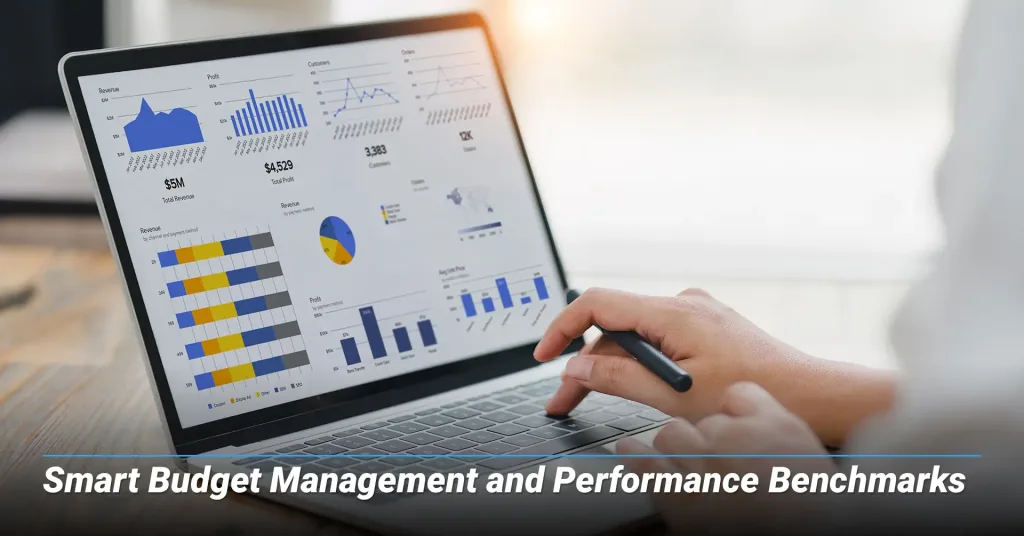
E-commerce budget planning requires balancing immediate needs with growth investments. The ideal revenue cost split for sustainable profits is as follows:
- 15-25% of platform cost, 20-33% for marketing, 10-15% for operations, and 5-10% for tech.
- E-commerce conversion rates for small businesses typically range 2.5-3.5%, but optimization can achieve 5-7% or higher.
- Cart abandonment rates between 60-80% means there are a plethora of optimization opportunities.
- Email marketing ROI averages $36 per dollar spent, making it highly effective for customer communication.
The measurement: Track metrics that matter for business success rather than vanity ones not impacting profitability.
Why Your Brand is THE Most Powerful Asset in the AI Era
As AI begins to reshape browsing, so too is the digital landscape for small to mid-size businesses (SMBs). To go along with the tide, investing in brand strength is crucial for customer acquisition and sustainable...10. Avoid Costly Mistakes That Destroy E-Commerce Businesses

Mobile mistakes represent critical errors, with 57% of users refusing to recommend businesses with poor mobile websites. Site speed, checkout complexity, and security inadequacy lead to lost sales and terrible reputations both on and offline. Focus on core functionality perfection before advanced feature implementation.
Data-driven decisions as opposed to following gut feelings can help avoid costly strategic mistakes. Analytics provide objective customer behavior insights for future planning. Marketing budget underestimation, particularly post-iOS 14.5, can exhaust resources without sustainable growth.
The protection: Learn from other businesses' mistakes rather than making expensive errors that could have been avoided with proper planning.
11. Future-Proof Your Business Against Disruption

A growing opportunity to keep on one’s radar is voice commerce. With the market projected to reach around $27 billion globally, having voice search optimization including conversational long-tail keywords and Frequently Asked Questions (FAQ) pages will put you ahead of the curve. Augmented reality and virtual reality create immersive shopping experiences easily available to smaller businesses through web-based AR/VR. Sustainable practices including eco-friendly packaging and supply chain transparency will make you stand out when securing and retaining new customers.
The opportunity: Early adoption of emerging technologies creates competitive advantages that become harder to replicate as markets mature.
Conclusion: Your E-Commerce Success Roadmap
The evidence is clear: E-commerce success is achieved when strategic technology adoption is paired with customer-focused fundamentals. Small business e-commerce strategy should focus on a mobile-first design and gradual AI implementation before moving onto a comprehensive security and data-driven optimization maximizing ROI.
To sustain this growth, prioritizing customer value creation and relationship building will make scaling up in digital markets seamless. Success depends on strategic implementation, continuous optimization, and unwavering customer experience focus that builds loyalty and in-turn drives referrals.
Ready to Transform Your Business with Professional E-Commerce Design?
The strategies outlined in this guide are tried and true stemming from years of e-commerce achievements. However, implementing them correctly requires expertise, experience, and technology resources that most small businesses lack internally. This alone is why successful entrepreneurs partner with proweb365.buildwithrab.com/ — we specialize in transforming business visions into revenue-generating e-commerce websites.
At proweb365.buildwithrab.com/, we don't just build websites — we build business success platforms. Our experienced team understands that small businesses need conversion-optimized, mobile-first, AI-integrated e-commerce solutions that generate immediate ROI while scaling for future growth.
Here's what makes us different: We've helped small businesses over the years avoid costly mistakes while implementing proven strategies that deliver measurable results. Our team knows which platforms work best for different business models, the best way to optimize for mobile conversion, where to integrate AI for maximum impact, and how to build security and trust features that convert skeptical browsers into loyal customers.
Don't let your competition get ahead while you're still planning. Every day without an optimized e-commerce website is another day of lost revenue and missed opportunities. Contact proweb365.buildwithrab.com/ today at (612) 590-8080 to schedule a consultation and discover how we can transform your business vision into a powerful, revenue-generating e-commerce website that positions you for long-term success.
How CMS Websites Offer Budget-Friendliness and Strategic Flexibility for Businesses
Content Management Systems (CMS) empower small to mid-size businesses (SMBs) to build and grow their online presence affordably and efficiently. To better understand, a report on how CMS platforms offer cost-effectiveness and remarkable adaptability, enabling...Essential FAQs about E-Commerce Website Design
1. Why Start with Mobile Web vs. Mobile Apps?
Mobile-first e-commerce should prioritize mobile web optimization for broader reach and lower costs. Mobile apps are best for businesses with loyalty programs and frequent purchases as they deliver 36% higher conversions, but require significant ongoing investment.
2. How to Implement AI Tools Cost-Effectively?
Start with free AI tools like ChatGPT for content creation and basic automation. Once consistent month to month revenue growth is achieved, evolve to using specialized tools that measurable ROI demonstration from initial implementations.
3. Why Social Commerce Can't Be Ignored?
Social commerce strategy has become essential with 54% of users researching products on social platforms. Instagram works well for visual products while TikTok offers viral potential. Success requires knowing where it's best to meet your customer base.
4. What Security Measures Are Non-Negotiable?
E-commerce website security requires SSL certificates, PCI compliance, regular updates, and transparent privacy policies as minimums. Enterprise-grade security is now customer expectation that determines whether browsers become buyers.
5. Should You Use Marketplaces or Your Own Website?
Multi-channel e-commerce uses both strategies—marketplaces for traffic and discovery, owned websites for brand control and relationships. This approach enhances reach while building long-term business value.
Best Tips for Startups to Win in the Age of AI Search Engine Marketing
The digital marketplace is constantly improving, with tech advancements and shifting consumer behaviors being the driving forces behind it. Businesses that fail to adapt their marketing strategies are left behind and forced to claw their...Take the Next Step in Your E-Commerce Journey
Every successful e-commerce business started with a decision to stop planning and start building. The strategies outlined in this guide are available to your business right now — but only if you take action to implement them.
proweb365.buildwithrab.com/ has helped many small businesses create powerful, conversion-optimized e-commerce websites that drive real results from day one. Our comprehensive solutions include custom responsive design, platform selection and setup, AI integration, complete security features, SEO/GEO foundation, and ongoing optimization support.
The brutal truth: Competitors aren't waiting for the perfect moment — they're building market share while you're researching options. Every day delayed is another that goes by filled with lost revenue and missed opportunities.
Visit proweb365.buildwithrab.com/ or call today at (612) 590-8080 for a free consultation and let our expert team transform your business idea into a thriving e-commerce success story that generates revenue, builds customer loyalty, and creates the foundation for long-term growth.

Phong Nguyen
Phong brings the perfect combination of business acumen and technical expertise to digital marketing. Armed with a Bachelor of Arts degree from St. Olaf College, a master’s in business administration in Marketing from the University of St. Thomas, and SEO/GEO from “The School of Hard Knocks,” Phong founded ProWeb365.com in 2009 to help Minnesota businesses and non-profit organizations succeed online.
For over 15 years, Phong and his team’s strategic approach has combined data-driven marketing with conversion-focused design, delivering measurable results that directly impact his clients’ bottom line. Are you ready to experience what innovative digital marketing can do for your business in the age of AI search engines? Contact Us today!


